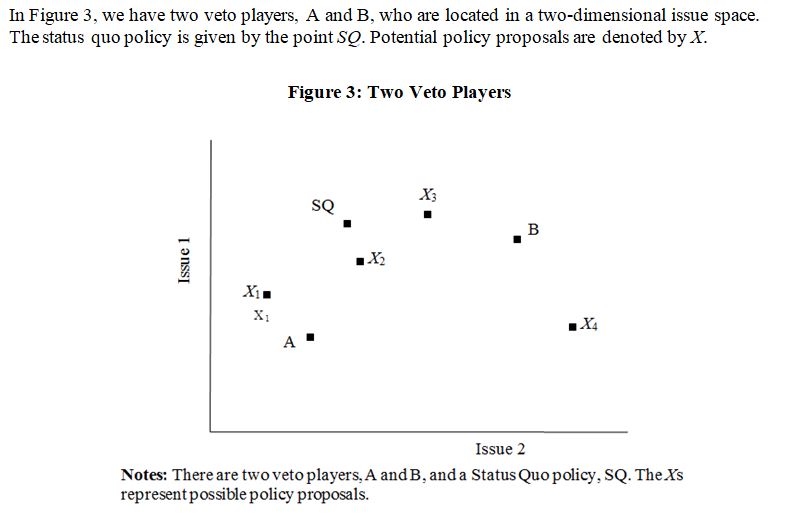Using Figure 3, draw indifference curves for each veto player (A and B) with respect to the status quo (SQ). Shade in the winset if there is one. Which of the potential policy proposals (labeled X1–X4), would win in a pairwise contest against the status quo?

A. X1
B. X2
C. X3
D. X4
B. X2
You might also like to view...
Article IV of the Constitution requires Ohio to honor an adoption that took place in California
Indicate whether the statement is true or false
Over the period from 1967 to the end of the Cold War, the United States and the Soviet Union were deemed to have essentially equivalent nuclear power,
a. owing to the buildup of U.S. military forces during the Reagan administration. b. although in the later part of this period the United States had quantitative superiority while the Soviet Union had quantitative superiority earlier. c. with the Soviet Union having greatly enhanced its quantitative and qualitative positions during the 1970s. d. although the Soviet Union never had as many missiles as the United States.
Which of these is an example of a broadly focused foreign policy?
a. Operation Desert Storm b. the Malta Summit between President George H. W. Bush and Mikhail Gorbachev c. emergency relief after the Haitian earthquake d. the North American Free Trade Agreement
The income tax is generally progressive, meaning that
A) it increases incrementally on an annual basis. B) those with more income pay higher rates of tax on their income. C) those with more income pay more in taxes than those with less income. D) it is a newer form of taxation than excise and sales taxes. E) it is better than a flat tax.